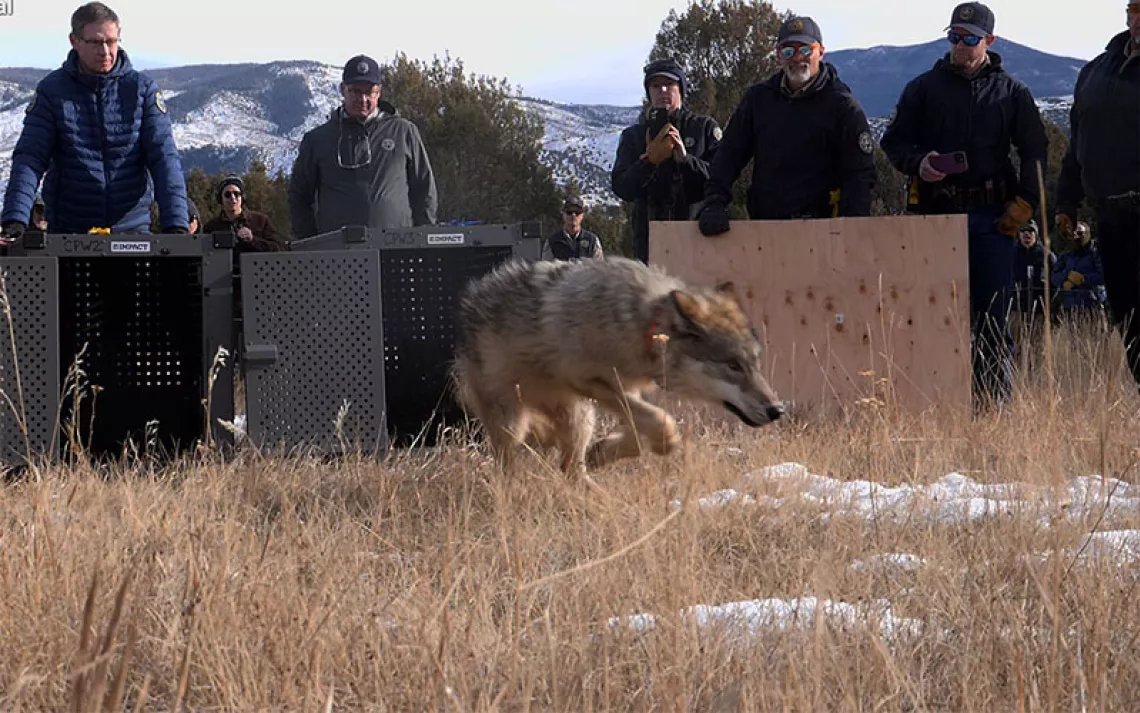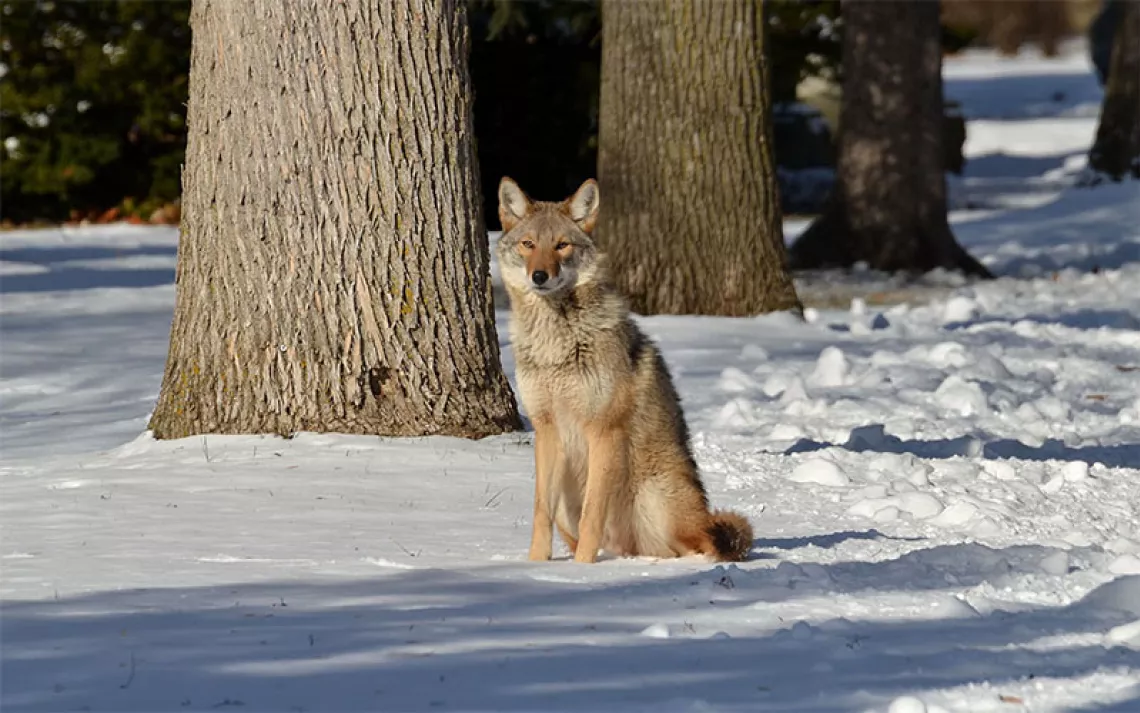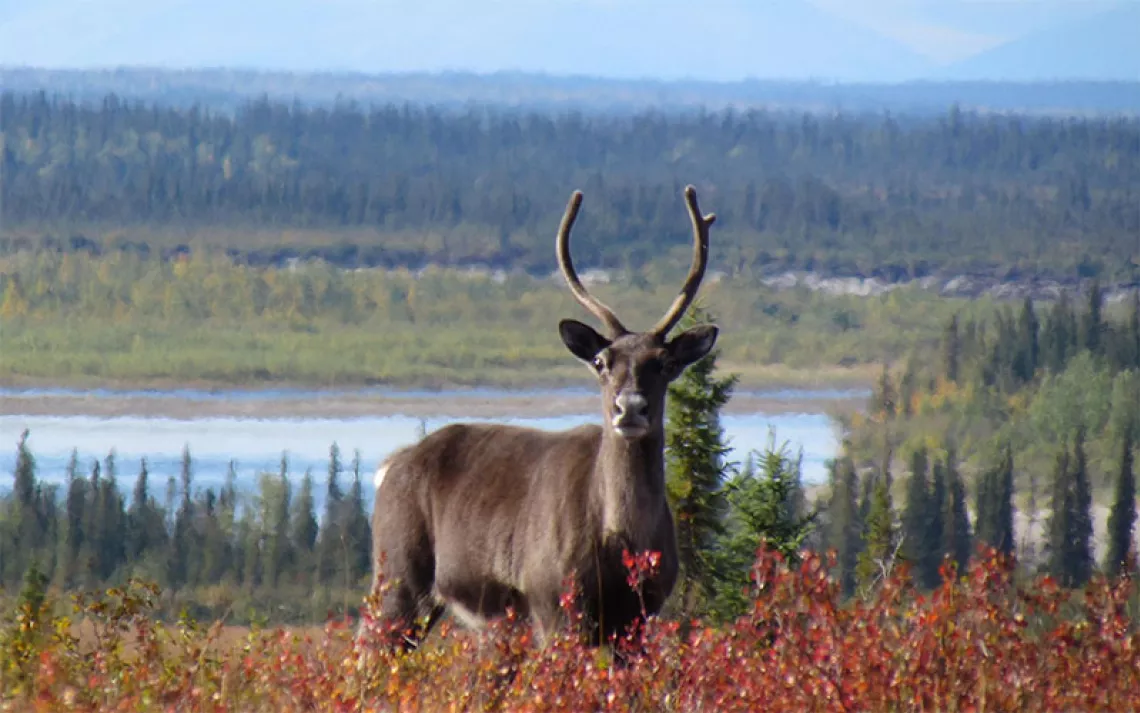Switzerland Grapples With the Return of Gray Wolves
A new law will make it easier for provinces to cull wolf packs. Will they survive?
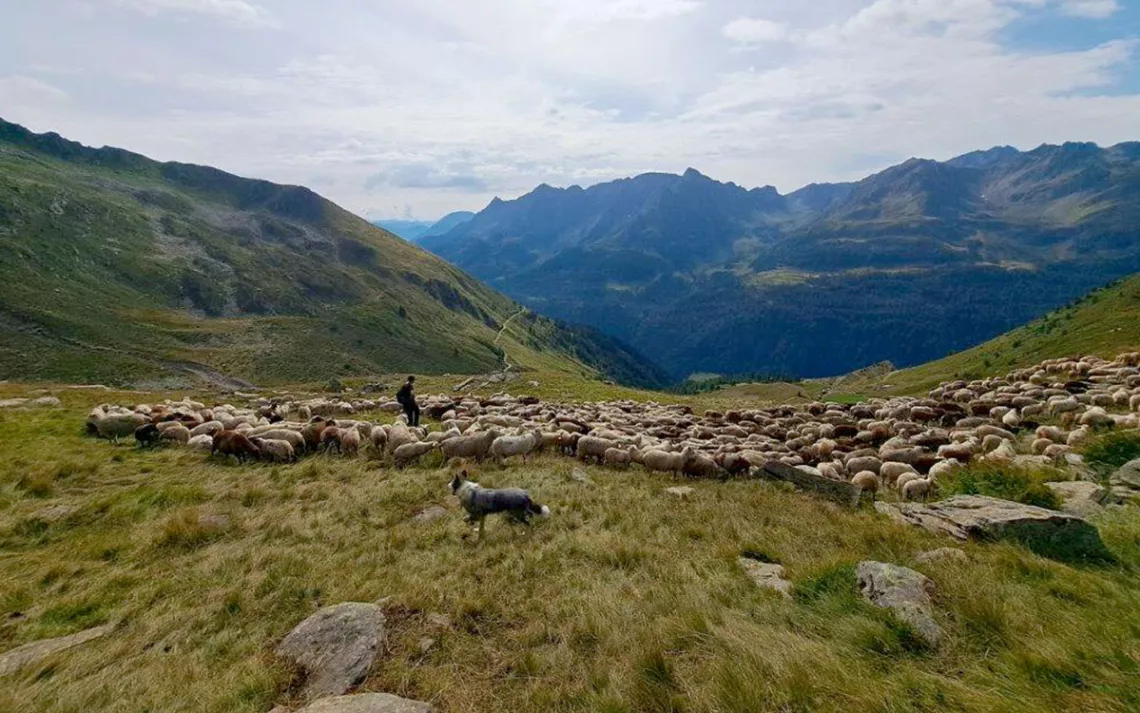
Photo courtesy Daniel Mettler
Ten years ago, high in the Alps, two gray wolves crossed the Italian border into Switzerland. Within a year they had pups, settling in the southern canton, or province, of Grisons, and the Calanda wolf pack was born. It was the first since the mid-19th century, when wolves were hunted to extinction in the tiny European country better known for cheese, chocolate, and flowery Alpine meadows. Since 2012, the pack has had 47 pups, with young wolves spreading out through the mountains.
By 2025, barring management changes, Switzerland is projected to have over 300 wolves in 50 roaming packs. To environmentalists, the wolf’s return is a rare success story in Europe’s biodiversity crisis—an unexpected homecoming for a long-absent native species. But for the nation’s Alpine farmers and shepherds, wolves are livestock killers that represent an existential threat to their traditional way of life. Can the Swiss government find a solution to help humans and wolves coexist?
“The wolf is indigenous to Switzerland, so it's just natural that it should return and play a part in the ecological system,” said Sara Wehrli, a wolf conservationist for Pro Natura, Switzerland’s oldest environmental organization. “But we don’t have any real wilderness anymore, not compared to the US, for example. So naturally wolves and human beings have to coexist in our small country.”
As they roam the Alps, Switzerland’s new wolves have found easy prey in the cows, sheep, and goats that farmers set loose there to graze unsupervised during the summer months. That pastoral tradition is a significant part of the small mountain nation’s cultural heritage and a major tourist attraction, maintaining the famous open alpine meadow aesthetic. In the winter, the wolves follow livestock into the valleys—and populated villages.
“In Switzerland, the Alpine space is a cultural landscape,” said Ralph Manz, scientific assistant for wolf monitoring at the Swiss Foundation for Predator Science, Ecology, and Wildlife Management, or KORA. “Over hundreds of years we’ve had a pastoral culture here of free-ranging sheep, goats, and cattle. In such a situation when the wolves come back, then you have problems.”
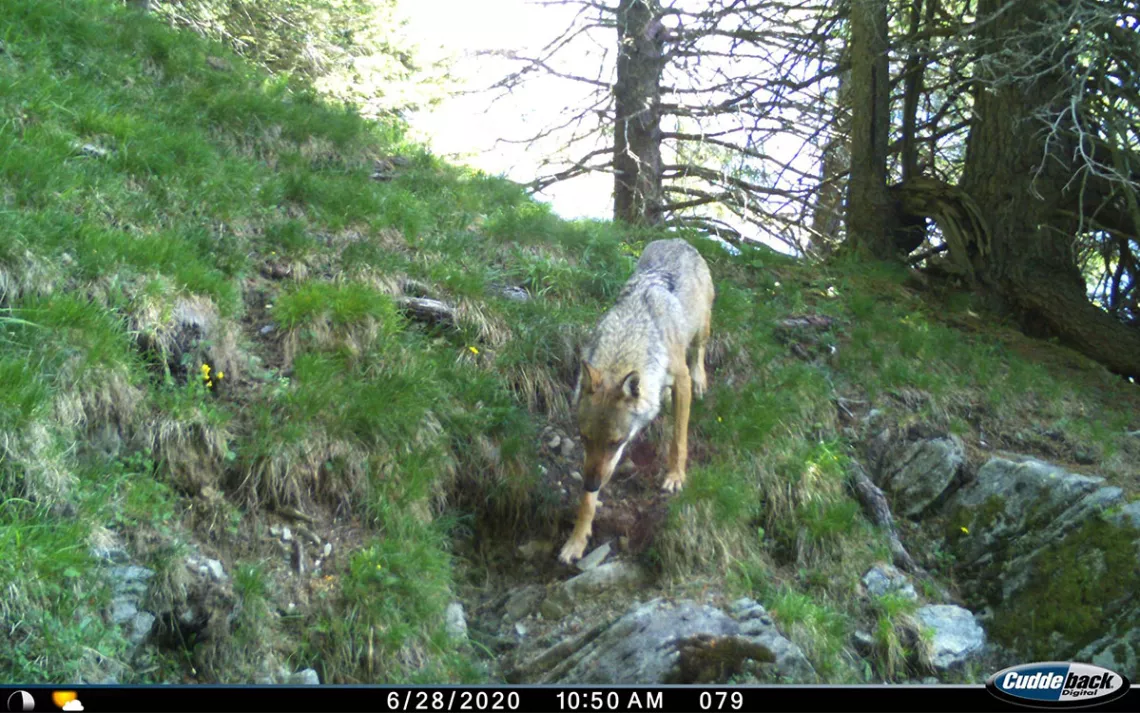
Handout photo
Due to their rapid reproductive rate and tendency to migrate great distances and adapt to Switzerland’s varied environmental conditions, “It is obvious that habitat quality and food availability would allow for much larger wolf populations than what humans seem willing to tolerate,” a major KORA report concluded in 2020.
Manz joined KORA in 2012, just as the Calanda pack formed in Grisons. He collects genetic samples from urine, feces, and saliva left on killed livestock from Switzerland’s 26 cantons, at the direction of the Federal Office of the Environment. Manz has watched the wolf population skyrocket from wandering lone wolves to dozens of well-established packs in just a decade. Last year, wolves killed over 1,000 livestock, a new record. Wolves have become an easy political scapegoat. “Today cattle, tomorrow children,” a Swiss National Council member warned in 2010. In one campaign, the political action group Cantons of Grisons and Valais Without Predators falsely claimed Swiss wolves were dangerous “wolf-dog hybrids.” Rural politicians have risen to prominence on the wolf issue with the support of sheep farmers who feel their traditional way of life—already highly subsidized and threatened by globalization—slipping away. “As a farmer, you can focus on the wolf for all of the many problems you have,” said Manz. “You can put it all on the wolf.”
Long before wolves returned, Switzerland signed the Bern Convention, an international treaty ratified in 1979 by nearly all the European countries that list the gray wolf as a strictly protected species, meaning it should not be “disturbed, captured, or killed.” EU countries, under their stricter Habitats Directive, aren’t able to kill wolves except in exceptional cases, but Switzerland exploited flexibility in the Bern Convention’s Article 9 to enact a federal hunting law that allows cantonal hunting offices to shoot “problem wolves” that cause considerable damage to livestock with the consent of the federal government. As the wolf population—and livestock predations—have risen, so has political pressure to kill more and more wolves. “You’ll find not one year since their re-immigration into Switzerland that the Swiss parliament does not have a discussion about wolves,” Manz said. There have been 60 motions regarding wolves in the Swiss Federal Council since 2006. He joked that to an outsider visiting parliament, it might seem like wolves are Switzerland’s only problem.
At every turn, anti-wolf lobbying efforts have been rebuffed—multiple measures downgrade wolves’ protected status within the Bern Convention or leave the convention entirely have ultimately failed. In 2020, Pro Natura collected enough signatures to call a national referendum on a change to the federal hunting law that would have made “preventive” culling of all large carnivores possible. The law was overturned by a narrow, 51 percent majority, the vote split evenly along a rural/urban divide. The views of environmentally minded urban communities, which also largely support “rewilding” long-cultivated alpine pastureland, often conflict with those of farmers who deal with the reality of wolves daily and want to maintain Switzerland’s traditional open alpine landscapes as cultural, not wild places, Wehlri said.
Undeterred, in 2022 parliament passed a new version of the 2020 law that sets a canton-level wolf quota. That quota, which will be set in an ordinance in the coming months, will be calculated as the minimum number of wolves to avoid extinction—to maintain a “minimum viable population.” Starting in December, individual cantons will have the power to decide whether they want to cull entire wolf packs down to that quota. “I would warn against thinking that killing more wolves means that damage will be reduced,” said Wehrli, who is disappointed with the new law. “I think there is little scientific evidence that it works.”
Arno Puoger is a wolf manager for the Grisons Cantonal Office of Hunting and Fishing. Under the current system, he’s responsible for traveling to farms and Alpine pastures to confirm wolf kills and passing genetic samples on to Manz at KORA. Puoger’s office then compensates the farmer for their loss and, if the perpetrating wolf is identified genetically as a repeat offender—having killed more than six sheep or goats—sends a ranger to track down and kill the wolf. Now, his job is set to change drastically. “Once this quota number is defined, we will basically have to shoot wolves until we’re down to that number again,” said Puoger. “We’re going to have the legal basis to remove entire wolf packs, which until now has never been done in Switzerland.”
Grisons is currently home to 12 to 14 packs, more than any other canton. The influential cantonal farmers’ association has announced they want to limit Grisons to two wolf packs. If the quota is set that low, Puoger expects the cantonal government to enforce it. Calanda, Switzerland’s first wolf pack, which has called Grisons home since 2012, could even be on the chopping block. “The number of wolves in a canton obviously has some influence on the number of predations,” said Puoger. “So I think this is going to help coexistence, but it’s not going to replace protecting livestock, which is still the most important thing.”
Centuries ago, the Swiss Alps were a different place. With the constant threat of wolves, sheep, goat, and cattle herds were constantly tended by shepherds and livestock guardian dogs. Over the wolf-free decades, that knowledge was lost, said Daniel Mettler, a mountain agriculture expert at AGRIDEA, a Swiss NGO contracted by the government to help farmers resurrect herd protection measures. There are now training programs for professional shepherds, and Mettler’s team started a breeding program 20 years ago that’s now producing and training herding dogs. “We still had some dogs with origins in this long tradition of protection, but they’d lost that capacity,” he said. “So we have to get it back with new genetic selection and new breeds. We started to import them from France and Italy.”
The other main protection measure doesn’t have a long tradition: solar-powered electric fencing. Farmers can put up temporary fencing in the Alps for the full summer season for herds that aren’t actively shepherded or set up and tear down smaller electrified night pens daily. These measures can be costly but are highly effective and typically subsidized by the government.
After 30 years of work at AGRIDEA, farmers are now getting on board, Mettler said. “Fifteen years ago, all farmers were really against all these prevention measures; they didn’t want to change. But after 15 years, the wolves are still here, and they still attack. So most of the farmers have changed their habits and are working with fences, livestock guardian dogs, and shepherds.” In Grisons, the Calanda pack hasn’t killed any of the 400 sheep that summer on Alp Ramoz in the Calanda Massif range since the 20 breeders there hired shepherds, introduced four dogs, and began a rotational grazing system using night pens.
Tourists will also need to get used to the change. There’s a well-established culture of hiking in the Swiss Alps—recreationalists are used to freely wandering along paths through meadows of cattle and sheep. Increasingly, as tourist numbers skyrocket, they’re finding paths blocked by bright-orange electric fencing or encountering autonomous livestock guardian dogs.
The upcoming law does have a herd-protection provision—if a wolf-killed livestock animal is found to have not been sufficiently protected by fencing and dogs, given the now endemic wolf threat, the farmer won’t be compensated financially for his loss. Mettler hopes that means farmers will continue to protect their herds, even as the number of wolves decreases under the quota system. Currently, 90 percent of attacks happen in unprotected herds.
When the new hunting law comes into effect in 2024, no one’s sure what exactly will happen. But it’s clear that Switzerland is paving its own way in wolf management—not the hands-off, let-them-be approach of most EU countries, nor the aggressive, quota-based hunting approach the Scandinavian countries have chosen. Switzerland hopes it has finally answered “the question of the right balance between total protection and renewed extermination,” as the 2020 KORA report put it. As wolf numbers increase across Europe, often with cross-border consequences, other nations will likely be paying close attention to Switzerland to see if theirs is the path to coexistence.
“This is a societal test,” said Wehrli. “It’s quite challenging to live with wolves; to coexist with them. The wolf has always polarized and been emotional for people, with all these fears and myths and legends around it. But if we can succeed in living with wolves, it should be possible to live with any species, and with nature in general.”
 The Magazine of The Sierra Club
The Magazine of The Sierra Club

